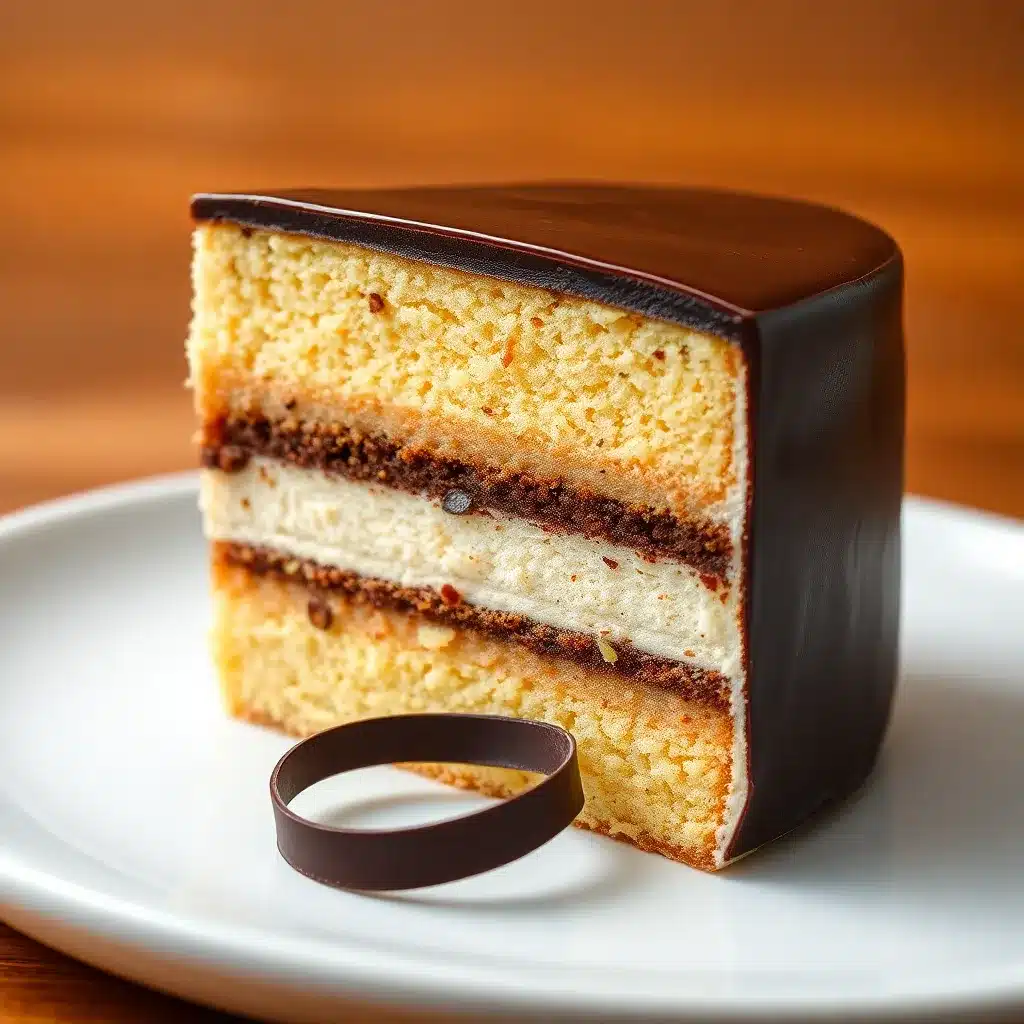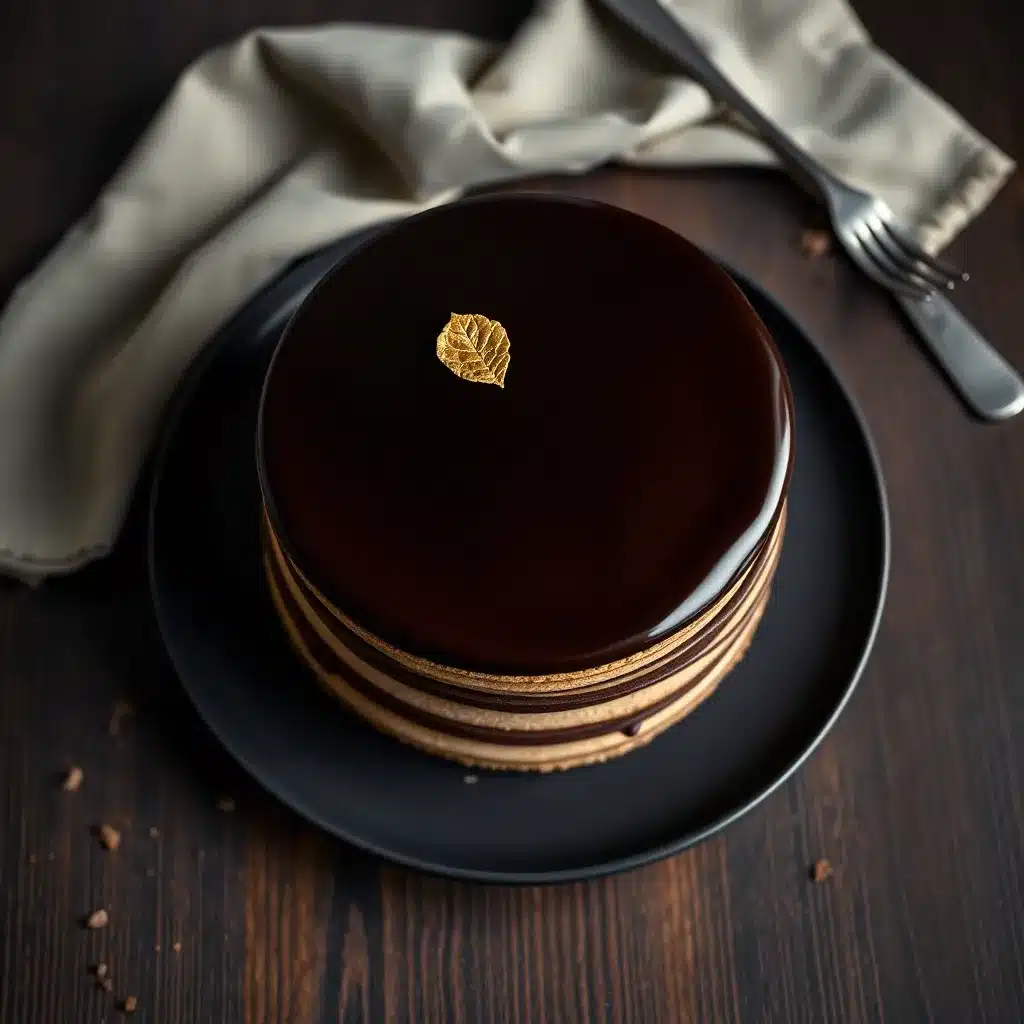I still remember the first time I made an Opera Cake. It was 2AM in a tiny Paris apartment with no proper oven, and I used a hairdryer to set the ganache. Was it ridiculous? Yes. Was it worth it? Absolutely. Because once you cut into that perfect rectangular slab—layer after layer of almond sponge, coffee syrup, buttercream, and ganache—there’s no going back.
Opera Cake, or Gâteau Opéra, is not just a cake. It’s a rite of passage. A declaration that you’ve entered the serious business of pastry. It’s French pâtisserie at its most technical, and its most seductive. Moist joconde layers soaked in espresso syrup. Silky French buttercream infused with coffee. A shiny, bittersweet chocolate glaze so smooth you can see your face in it—though you’ll be more interested in eating it, frankly.
This isn’t your quick “whip it together after dinner” cake. It demands patience, technique, and attention to detail. But it rewards you with every forkful.
Ingredients & Substitutions
Joconde Sponge
- 6 large eggs
- 6 egg whites
- 200g almond flour (don’t skimp—get fine-blanched)
- 200g icing sugar
- 60g all-purpose flour
- 60g unsalted butter, melted and cooled
Espresso Soaking Syrup
- 120ml strong brewed espresso (or instant espresso works, don’t let purists judge you)
- 80g granulated sugar
- 1 tbsp dark rum (optional but it does things—trust)
Coffee French Buttercream
- 200g unsalted butter, room temp
- 100g granulated sugar
- 50ml water
- 4 egg yolks
- 1½ tbsp instant espresso dissolved in 1 tbsp hot water
Chocolate Ganache
- 200g dark chocolate (around 70%)
- 200ml heavy cream
- 30g unsalted butter (for that extra silkiness)
Chocolate Glaze (Glaçage)
- 150g dark chocolate
- 100ml cream
- 20g glucose syrup (or light corn syrup)
Substitutions & Notes
Swap almond flour for hazelnut flour if you’re feeling nutty. No espresso? Cold brew concentrate works too. Can’t do dairy? Use vegan butter and oat cream, but results will vary slightly in mouthfeel. For sugar-free diets, monk fruit sweetener is the least offensive substitution in buttercream. Stevia is… let’s say divisive.
Use couverture chocolate if you can. It melts smoother and has better snap. But don’t panic if you’ve only got store-brand bars. Just chop it up real fine.

Step-by-Step Instructions
Make the Joconde Sponge
Preheat your oven to 220°C (425°F). Line three jelly roll pans or baking sheets with parchment and grease them lightly.
In a stand mixer, beat the whole eggs, almond flour, and icing sugar until it triples in volume—pale, thick, and moussey. This takes about 8-10 mins.
In a separate bowl, whip egg whites to soft peaks. Add a pinch of salt or cream of tartar. Gently fold into almond mixture in batches. Be slow. No rough movements.
Sprinkle in the flour and fold. Drizzle in the melted butter. This part separates the amateurs from the pros—don’t deflate it. Bake each sponge for 5-7 minutes or until lightly golden. Not brown. Lightly golden. Think tan lines.
Let cool fully. These layers are delicate like gossip. Handle with care.
Espresso Syrup
Boil espresso and sugar together until dissolved. Stir in the rum, if using. Cool it down. You want it warm but not hot when brushing the sponge. Hot syrup will sog it out like a bad tiramisu.
Coffee Buttercream
Beat yolks until pale and thick. Meanwhile, bring sugar and water to a boil until it hits 115°C (soft-ball stage). Trickle the syrup slowly into yolks while mixing on high. You’re making pâte à bombe here. Let cool slightly.
Beat in softened butter, a piece at a time. It’ll curdle. Ignore the fear. Keep mixing. It’ll smooth out. Add the espresso last. Taste. Cry a little. It’s that good.
Chocolate Ganache
Heat cream until just simmering. Pour over chopped chocolate. Wait 30 seconds. Stir in slow circles. Add butter. Stir until it’s glossy. Resist the urge to bathe in it.
Assembly Time
Start with one sponge layer. Brush generously with syrup. Spread half the buttercream. Chill for 10 minutes.
Place second sponge. Soak. Spread ganache. Chill again.
Third sponge goes on top. Soak again. Spread remaining buttercream. Chill for 20 minutes.
Chocolate Glaze
Gently melt chocolate, cream, and glucose together. Stir until glossy. Let it cool a few minutes. It should be pourable but thick enough to coat the back of a spoon.
Pour over chilled cake and smooth with an offset spatula. Chill again to set. Clean edges. Slice with a hot knife.
Serve tiny rectangles. Fancy ones. Like you’re a Parisian pastry chef with rent overdue but standards intact.
Cooking Techniques & Science
Opera Cake is all about emulsions and aeration. The joconde relies on whipped eggs for lift, not baking powder. So overmixing? Death. Fold like you’re tucking in a baby.
The buttercream’s magic is in the pâte à bombe—it’s rich, creamy, and stable. More than Swiss or American styles. It doesn’t break as easily if you keep your butter at room temp. Cold butter = grainy horror.
Ganache thickens as it cools. The higher the cocoa % of the chocolate, the firmer it’ll set. Want a softer bite? Use 60% instead of 70%. Add a touch of corn syrup to keep it glossy if serving the next day.
Tools that matter: offset spatula (non-negotiable), sugar thermometer (don’t wing it), and a serrated knife for clean slices. Oh, and patience. That one you can’t buy.
Serving & Pairing Suggestions
Opera Cake doesn’t need a crowd. It is the event.
But if you want to serve it like a pro—garnish each slice with a gold leaf speck or a chocolate curl. Want to write “Opera” on top in tempered chocolate? Go for it. Très chic.
Pair with black coffee. No milk. No sugar. Let the bitterness contrast the cake’s richness. Or go full indulgent and serve with a small glass of Cognac or Amaro. Bitterness + sweetness = balance.
It makes a stunning plated dessert. Add a small quenelle of coffee ice cream, a swipe of dark chocolate sauce, and a single roasted coffee bean for drama.
Conclusion
Opera Cake is drama in layers. It demands respect, precision, and maybe a little cursing under your breath. But it’s worth every second.
It teaches you patience. Control. Temperature awareness. The power of a hot knife. It’s the kind of dessert that makes pastry chefs fall in love with baking all over again.
Want to impress someone? Make them Opera Cake. Want to test yourself? Make it twice. Want to become a pastry god? Master it blindfolded.
My final tip? Make it over two days. Let it rest overnight before glazing. The flavors deepen, the layers set, and it slices like a dream.
Don’t be scared of the steps. Be scared of what you’re missing if you never try.
FAQs
How do I keep my buttercream from curdling?
Use butter that’s soft, not melted. If it curdles, just keep mixing. It’ll come back together like magic.
Can I make Opera Cake in advance?
Yes! It actually improves overnight. Assemble everything but the glaze a day ahead. Glaze the day you serve.
What if I don’t have almond flour?
Grind blanched almonds super fine, but be careful not to turn them into paste. Almond flour gives structure and flavor—don’t skip it.
Why is my ganache too runny or too firm?
Check your chocolate %—too high and it sets like fudge. Too low, it won’t hold. Stick to 60-70%. And measure cream accurately.
Can I freeze Opera Cake?
Yep. Wrap slices tightly in plastic, then foil. Freeze up to 1 month. Thaw in fridge. Texture will be slightly softer but still divine.

Olivia P. is a seasoned food blogger at Tastywink, sharing delicious, easy-to-follow recipes inspired by him passion for home cooking. With years of culinary blogging experience, he brings flavor, creativity, and a personal touch to every dish.
